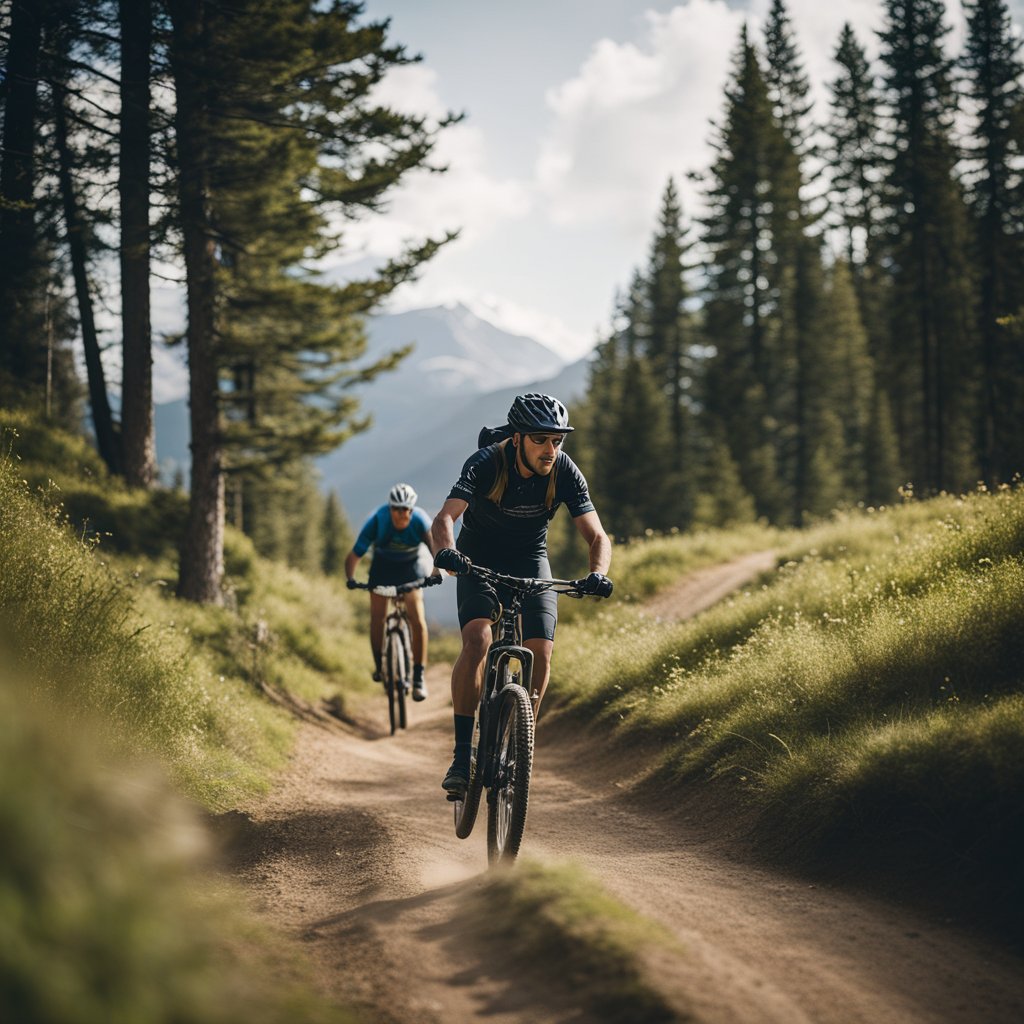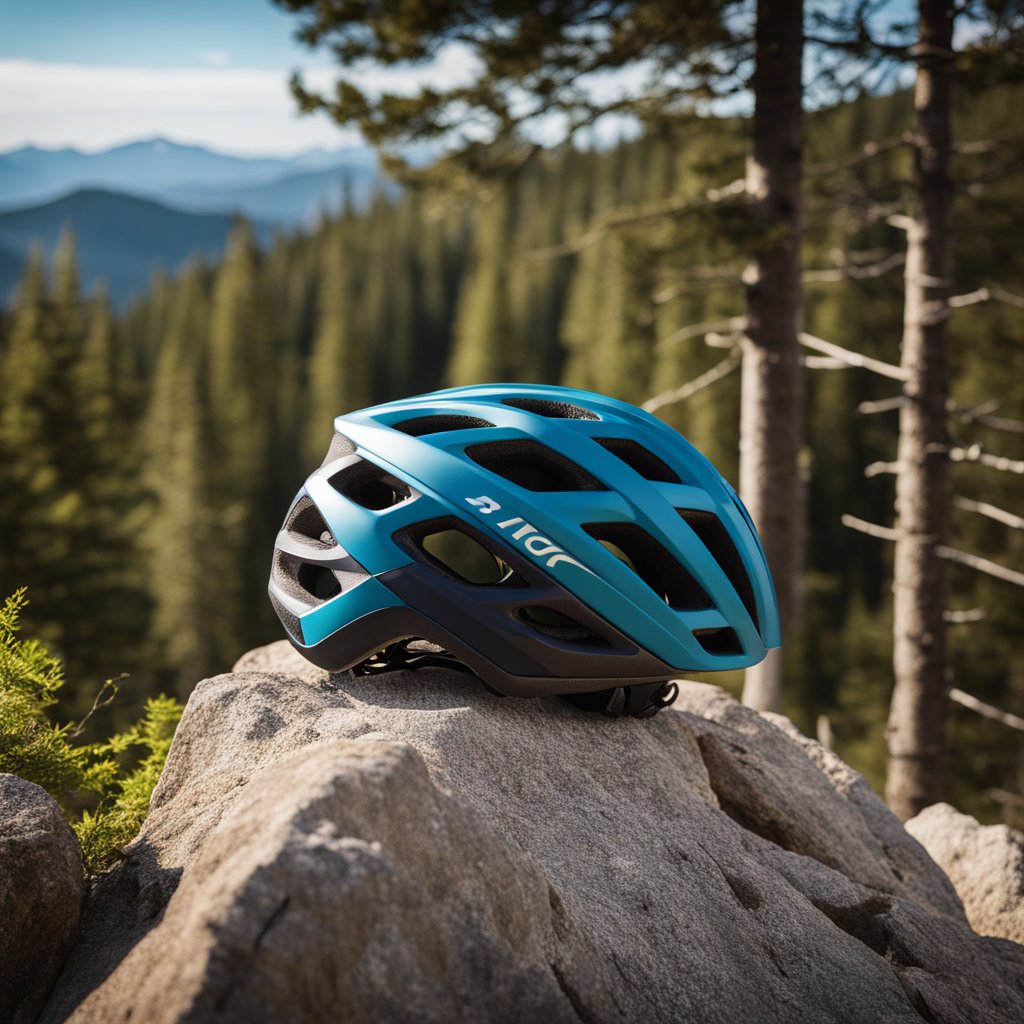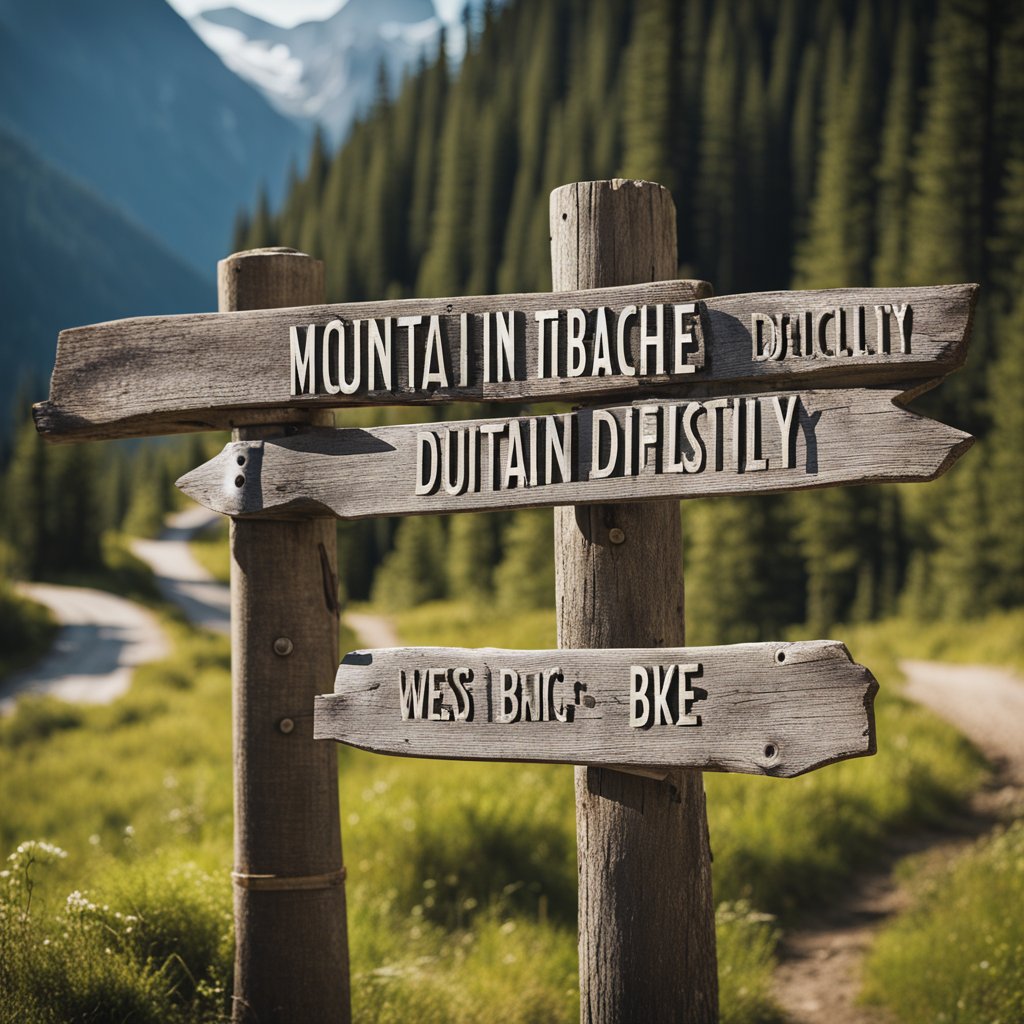Understanding Trail Etiquette
As a beginner mountain biker, it is important to understand the basics of trail etiquette. This will help you to respect the trail and your fellow trail users, and ensure that everyone enjoys their time on the trail.
The Basics of Trail Etiquette
When you are on the trail, always be aware of your surroundings and other trail users. Be friendly and courteous to hikers, runners, and other mountain bikers. Remember that the trail is a shared space, so it is important to be respectful and considerate of others.
Here are some basic trail etiquette rules to keep in mind:
- Always yield to hikers and runners. They have the right of way on the trail.
- When approaching other mountain bikers from behind, announce your presence by saying “on your left” or “on your right”. This will help to avoid collisions and ensure that everyone stays safe.
- Keep your speed under control and be prepared to stop at any time. This will help you to avoid accidents and collisions with other trail users.
- Pack out your waste and trash. Leave no trace principles apply to everyone on the trail, so make sure you do your part to keep the trail clean and free of litter.
Right of Way on the Trail
When it comes to right of way on the trail, hikers and runners always have the right of way. This means that as a mountain biker, you should always yield to them. When approaching hikers or runners, slow down and be prepared to stop if necessary. If the trail is narrow, step off to the side and let them pass.
When it comes to other mountain bikers, the general rule is that the uphill rider has the right of way. This is because it is harder for the uphill rider to stop and start again, so it is important to let them continue their climb without interruption. If you are the uphill rider, make sure to announce your presence and let the downhill rider know that you are coming.
Leave No Trace Principles
Leave no trace principles are an important part of trail etiquette. They help to ensure that the trail remains clean and free of litter, and that the natural environment is preserved for future generations. Here are some of the key leave no trace principles to keep in mind:
- Pack out your waste and trash. This includes food wrappers, water bottles, and any other trash you generate on the trail.
- Stay on the trail. Don’t cut switchbacks or create new trails. This can damage the natural environment and disrupt wildlife habitats.
- Respect wildlife. Don’t feed or approach wildlife on the trail. Keep a safe distance and observe them from afar.
- Be considerate of other trail users. Keep noise levels down and avoid disturbing other trail users.
Preparing for the Ride
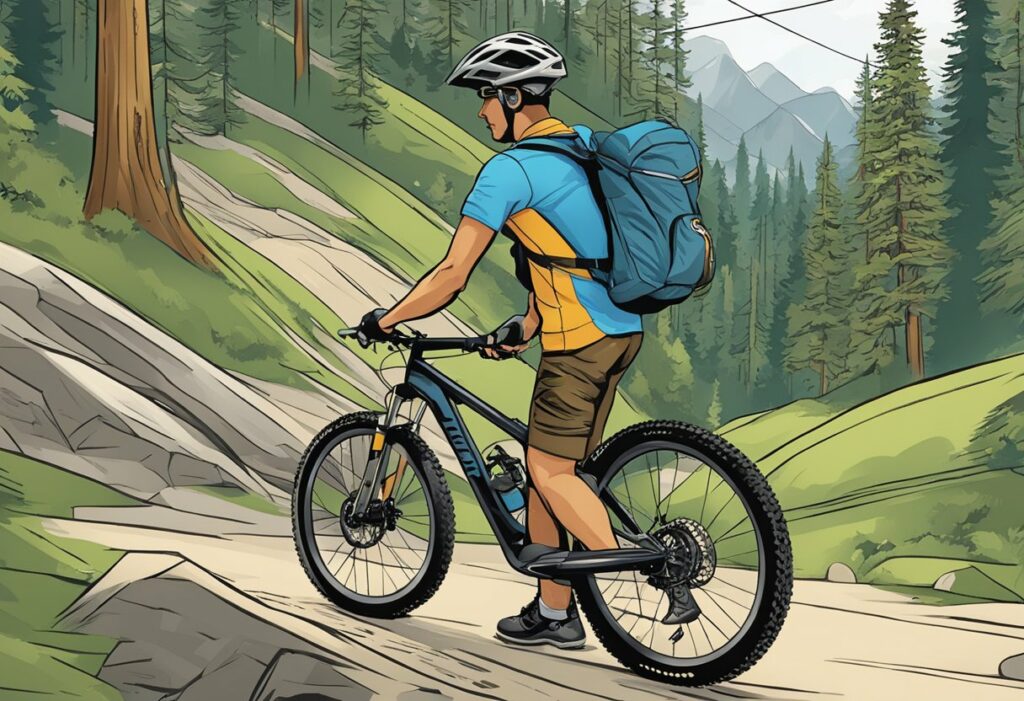
As a beginner mountain biker, it’s important to prepare yourself and your gear before hitting the trails. Here are some tips to help you get started:
Safety and Gear
First and foremost, always wear a helmet while mountain biking. Your helmet is your most important piece of safety gear and can protect you from serious head injuries in the event of a crash. Make sure your helmet fits properly and is adjusted snugly on your head.
In addition to a helmet, consider investing in other safety gear such as gloves, knee and elbow pads, and protective eyewear. These items can help protect you from cuts, scrapes, and bruises while riding.
Make sure your mountain bike is in good working order before you hit the trails. Check your brakes, gears, and tires to ensure they are functioning properly. Carry spare tubes and a basic repair kit in case of a flat tire or other mechanical issue.
Planning Your Trail Adventure
Plan ahead before heading out on your ride. Research the trail you plan to ride and make sure it is appropriate for your skill level. Check the weather forecast and dress accordingly.
Be aware of any trail closures or restrictions, and avoid riding on private land or in state or federal wilderness areas where bikes are not permitted. Respect trail and road closures, and obtain permits or other authorization as required.
Consider visiting a local bike shop before your ride to get advice on gear, trail recommendations, and other helpful tips. And finally, avoid wearing headphones while riding so you can stay alert to your surroundings and communicate with other trail users.
On the Trail
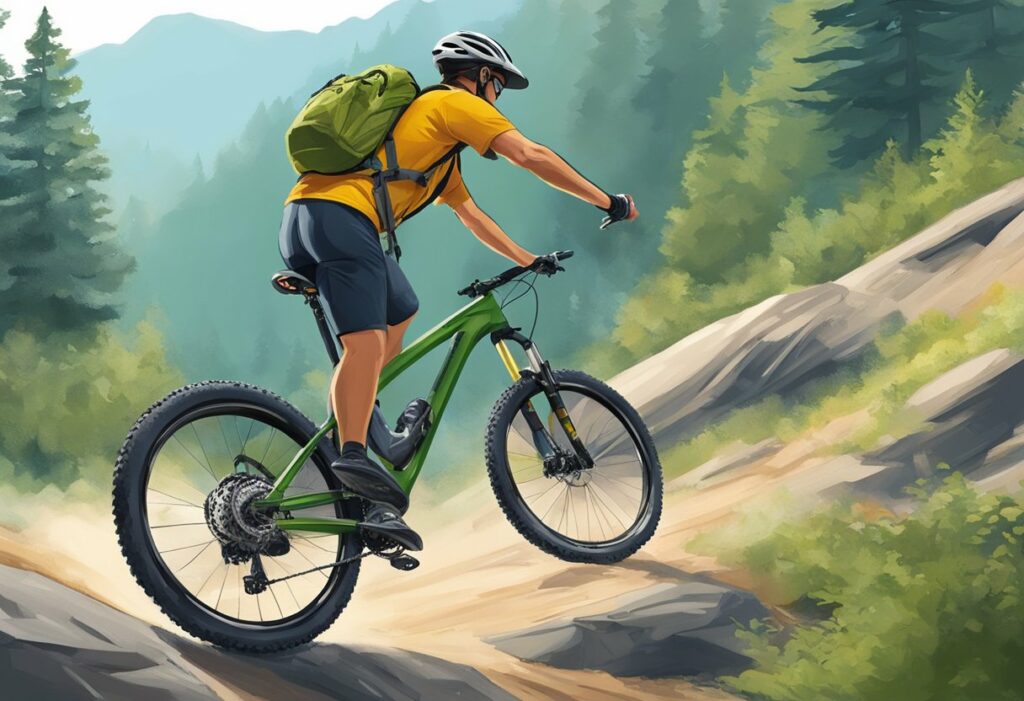
When you hit the trails, it’s important to keep in mind that you’re not the only one out there. You’ll likely encounter other mountain bikers, hikers, equestrians, and maybe even runners. Here are some tips to help you navigate the trails and make the experience enjoyable for everyone.
Passing and Being Passed
When passing other trail users, it’s important to yield appropriately. If you’re passing a hiker or equestrian, slow down and give them plenty of space. If you’re approaching from behind, use a bell or other audible signal to let them know you’re coming. When passing a horse, make sure to give it plenty of space and avoid sudden movements or loud noises that could startle it.
If you’re being passed by another mountain biker, it’s important to stay on your side of the trail and let them pass safely. If you’re unsure which side to stay on, ask the other rider which side they prefer.
Interacting with Other Trail Users
Mountain biking is just one of many activities that take place on the trails, so it’s important to be respectful of other users. When encountering hikers or equestrians, slow down and say hello. If you’re passing a group of hikers, make sure to say “hello” or “passing on your left” to let them know you’re coming.
Managing Trail Obstacles
The trails can be full of obstacles like rocks, roots, and fallen trees. When encountering these obstacles, it’s important to slow down and approach them carefully. If you’re unsure how to navigate an obstacle, get off your bike and walk it through. This will not only help you avoid getting injured, but it will also help preserve the trail for other users.
Remember, the trails are meant to be enjoyed by everyone. By following these tips and being respectful of other users, you can help ensure that everyone has a safe and enjoyable experience.
Trail Sustainability
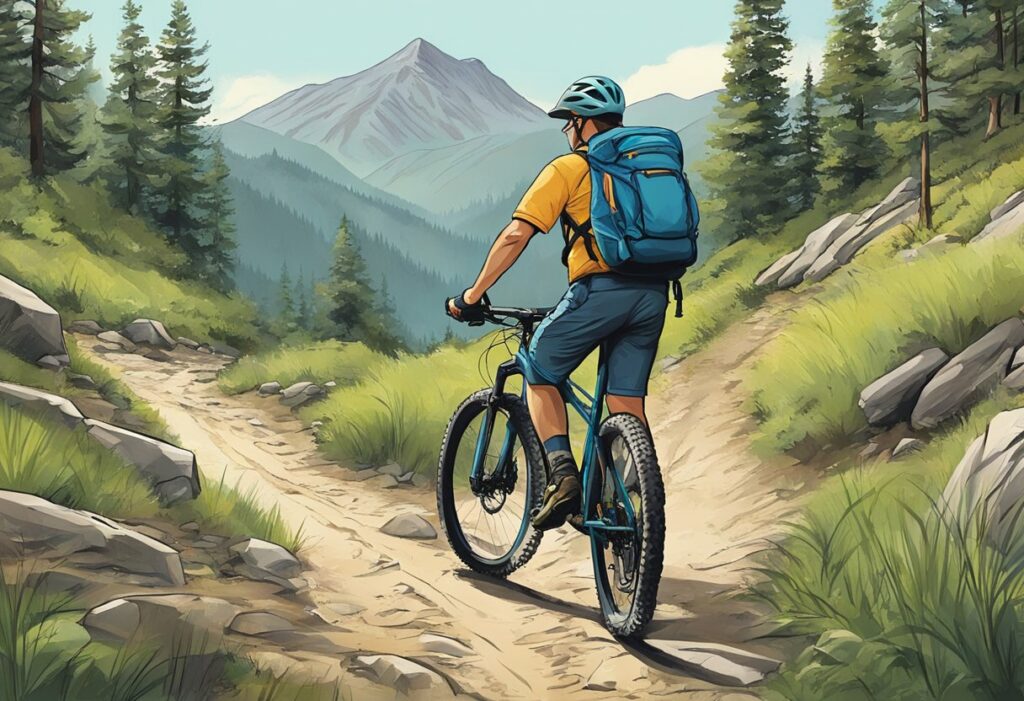
When you’re out on the trails, it’s important to keep in mind that you’re not the only one using them. Other riders, hikers, and even wildlife all rely on the trail system, so it’s crucial to practice responsible riding practices and support sustainable trail building efforts.
Responsible Riding Practices
Responsible riding practices are essential to maintaining the health and longevity of the trail system. To ensure that the trails remain open and accessible to all, you should:
- Stay on designated trails: Riding off-trail can cause damage to the environment and disrupt wildlife habitats. Stick to the designated trails to help preserve the natural environment.
- Yield to other trail users: When encountering other trail users, yield to them and give them plenty of space to pass. This includes hikers, runners, and horseback riders.
- Avoid wet and muddy trails: Riding on wet and muddy trails can cause damage to the soil and make it more difficult for the trail to recover. If the trail is wet or muddy, consider finding a different route or waiting until it dries out.
- Pack out what you pack in: Leave no trace and pack out all trash and litter. This helps keep the trail system clean and free of debris.
Supporting Trail Systems
Trail systems require ongoing maintenance and support to remain accessible and sustainable. You can help support the trail system by:
- Volunteering with IMBA or local land managers: IMBA and local land managers often organize trail maintenance and building events. Volunteering your time can help ensure that the trails remain accessible and enjoyable for all.
- Donating to trailhead or preserve organizations: Trailhead or preserve organizations often rely on donations to fund trail maintenance and building efforts. Consider donating to help support the trail system.
- Educating others: Spread the word about responsible riding practices and the importance of sustainable trail building. By educating others, you can help ensure that the trail system remains accessible and enjoyable for generations to come.
By practicing responsible riding practices and supporting sustainable trail building efforts, you can help ensure that the trail system remains open and accessible for all. Remember, the trails are a shared resource, so it’s up to all of us to do our part to preserve them for future generations.
Advanced Considerations
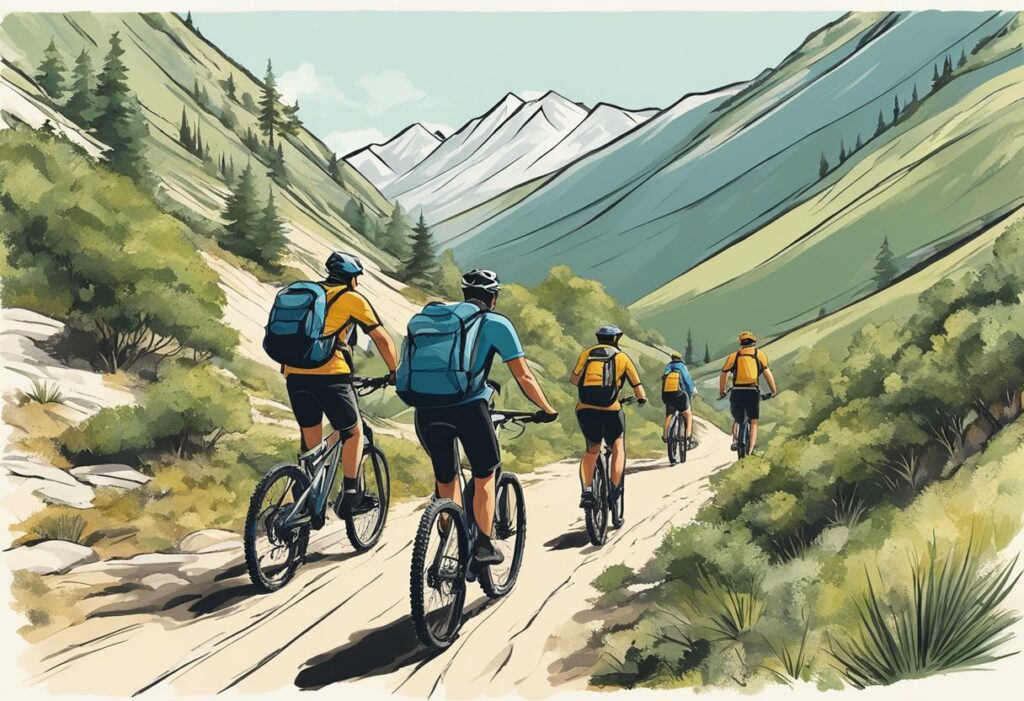
As you gain more experience on the trails, there are some additional considerations to keep in mind. In this section, we will cover riding in groups and using technology responsibly.
Riding in Groups
Riding with a group can be a lot of fun, but it’s important to remember that you are still sharing the trails with other users. When riding in a group, it’s important to communicate with each other and with other trail users. Let other users know how many riders are in your group and when it’s safe to pass.
It’s also important to remember that not everyone rides at the same pace. If you’re riding with a faster group, be sure to wait at intersections and trailheads for slower riders to catch up. This will help prevent trail congestion and ensure that everyone has a good time.
Using Technology Responsibly
Technology can be a great tool for tracking your progress and sharing your rides with others, but it’s important to use it responsibly. If you’re using a GPS device or a smartphone app like Strava, be sure to keep your eyes on the trail and not on your screen.
It’s also important to remember that not everyone wants to be tracked or have their rides shared online. If you’re riding with others, be sure to ask before sharing their rides on social media or other websites.
Finally, be aware of the impact that your technology use can have on the trail. If you’re riding with a group, consider turning off your GPS device or app to prevent trail braiding and widening. And always be sure to follow speed regulations and control your bicycle, especially when using technology.
Remember, mountain biking etiquette is all about being friendly and respectful to other trail users. By following these advanced considerations, you can help ensure that everyone has a great time on the trails.
Frequently Asked Questions
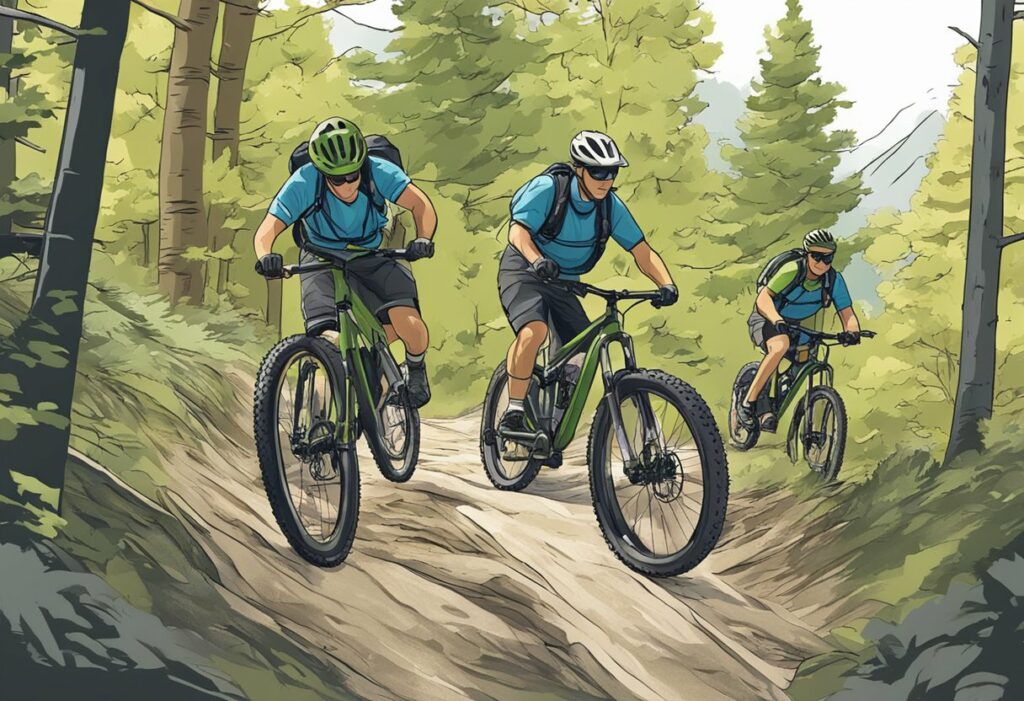
What are the basic trail etiquette rules every mountain biker should follow?
As a beginner mountain biker, it’s important to know and follow basic trail etiquette rules. These rules help ensure the safety of all trail users and protect the environment. Some of the basic rules include:
- Yielding to other trail users, including hikers, equestrians, and uphill bikers.
- Staying on designated trails and not creating new ones.
- Not littering or leaving trash behind.
- Respecting trail closures and restrictions.
- Keeping a safe distance from wildlife.
How should mountain bikers yield to other trail users like hikers and equestrians?
Mountain bikers should always yield to other trail users. When encountering hikers or equestrians, it’s important to slow down and make your presence known. You can do this by calling out a friendly greeting, such as “hello” or “passing on your left.” Slow down or stop if necessary to give them plenty of space to pass.
Can you explain the right of way guidelines when encountering others on mountain bike trails?
The International Mountain Bicycling Association (IMBA) has established a yield triangle for right of way on multi-use trails. The basic rules associated with the yield triangle include:
- Cyclists and mountain bikers yield to hikers, runners, and equestrians.
- Hikers and runners yield to equestrians.
- Downhill users yield to uphill users.
What essential equipment should I carry while mountain biking on trails?
As a beginner mountain biker, you should always carry essential equipment with you while riding on trails. Some of the essential equipment include:
- A properly fitting helmet
- Gloves
- Eye protection
- Water bottle or hydration pack
- Spare tube and tire repair kit
- Multi-tool
- Bike pump or CO2 inflator
How do I navigate single track trails respectfully and safely as a beginner?
When navigating single track trails, it’s important to stay in control of your bike and ride at a safe speed. Always keep an eye out for other trail users and be prepared to yield if necessary. Avoid skidding or sliding around corners, as this can damage the trail and create hazards for other users.
What are the IMBA’s recommended practices for mountain bikers using multi-use trails?
The IMBA recommends the following practices for mountain bikers using multi-use trails:
- Always yield to other trail users.
- Slow down and make your presence known when approaching others.
- Stay on designated trails and avoid creating new ones.
- Respect trail closures and restrictions.
- Leave no trace and pack out all trash.
- Be an ambassador for the sport and promote responsible trail use.
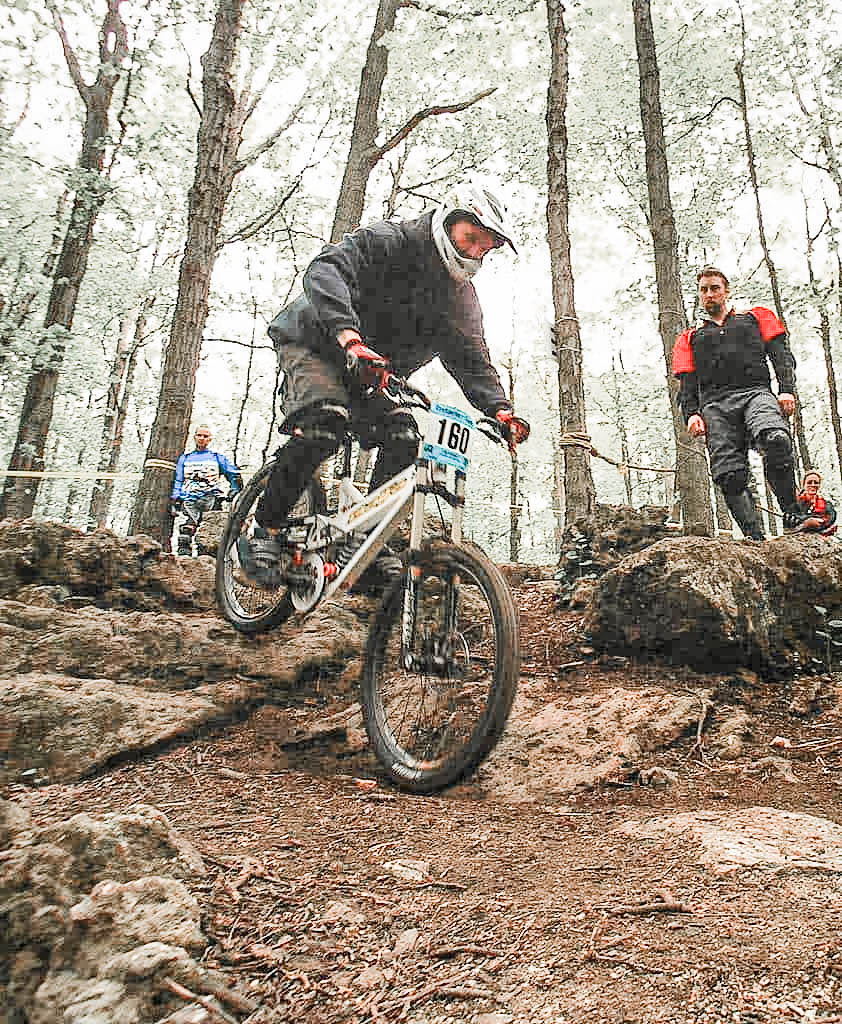
Tim is the founder of SimpleMTB and has been mountain biking for decades. He raced in the Ontario Cup series during his teenage years and riding continues to be one of his favorite hobbies now as an adult.
